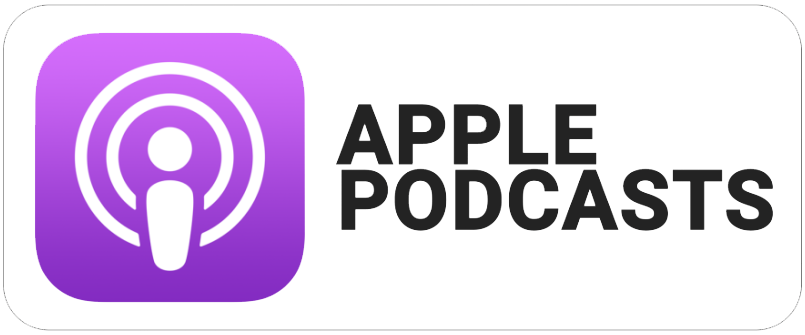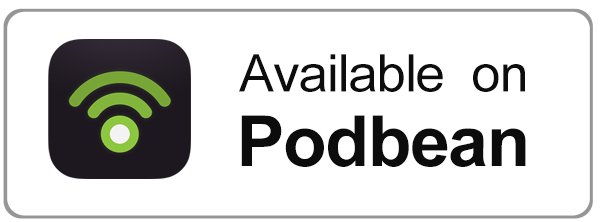Transcript
Welcome to BLaST the Airwaves with BLaST Intermediate Unit 17. Here at BLaST Intermediate Unit 17, we strive to transform lives and communities through educational services. On this podcast, we will provide you with educational solutions for all, no matter the learning environment. So teachers, administrators, caregivers, what are you waiting for?
What would happen if we started questioning, what if? What if we had a positive perspective on education? What if we flip the switch on education? What if we were the solution?
We have the pleasure of speaking with Erin Hamilton, our Curriculum Specialist here a BLaST Intermediate Unit 17. Erin, thanks so much for joining us today to discuss educational solutions for all. Specifically, we’re going to be discussing early literacy. More importantly, how caregivers can reinforce early literacy in their homes.
So are you ready to blast the airwaves, Erin?
I am. Excited to be here!All right, fantastic. So why don’t we start by telling us a little bit more about your role in relation to the topic today?
All right. Well, for the last year and a half, then a training and consulting, here at BLaST IU talking a lot about early literacy with our districts and specifically talking about building that foundation to set our students up, to be successful readers and writers as they continue through intermediate school, middle school, and then onto high school and the rest of their lives.
So, I think a great topic for today is really how can we connect that to caregivers in the home with the school relationship, and what could we be doing as support systems at home that really are aligned with what our children are doing in school each day? Or, virtually if that’s where we’re at also.Yeah, for sure. I know for me, if I was a caregiver at home, I don’t even know if I would know where to start when it comes to, you know, phonemic awareness and just reading. I mean, we talked about in earlier podcasts that sometimes reading is just the best thing you can do for your kid. Right? And so I’m excited to hear a little bit more about your suggestions too, as well.
So in earlier episodes, we discussed the importance of the value of reading. and even writing, we talked about too in the podcast at a young age. And, even the importance of adults reading to their child aloud, like I mentioned. What can you add about the emphasis on early literacy?
Well, you know, with adults in a fluent reading is something that we just take it for,
we take advantage of, and we take for granted. Although our children don’t have the proficiency yet, they watch what we do as models to them, role models, and they mimic a lot of what our behaviors are. So the same goes for reading and writing. Um, there is a researcher Linnea Ehri (1995) who has phases of development. She talks about, there were the stages of development for children and they go through starting at a very early age by mimicking what they see their parents doing by maybe writing down grocery lists or jotting down a note to someone in the home. And the children will start mimicking that. They don’t really have the formation of letters.
They certainly don’t have spelling at that point, but they just know that writing down something on paper correlates to what the person, or the author, is thinking in their head. So really being a good role model to your children at home and just being into reading and writing in your own home. It doesn’t have to look very formal. It can be a matter of picking up the newspaper (if that’s something you still do) or a magazine, or even reading a blog that you’re into and just letting your children be a part of that. And watching that you value that, um, really leads to them then valuing that as they get older.
So you talked a lot about the importance of reading to your children at home. And that is something that I absolutely encourage, but don’t forget, also, that music can be very helpful in that respect as well; because, ultimately what we want to build is that basic understanding of our oral language. Children come to kindergarten usually with a good understanding of oral language. So that’s something that parents can really focus on at home. And all that really requires is talking to your children, having conversations with them, and not being afraid to use vocabulary that might be new to them. And teaching that along the way through your conversation.Wow. You just led right into my next question, because something that we did not necessarily get the (and I swear I didn’t pay Erin to do this or anything) but something we did not have the chance to touch on in this podcast was the value of that language development, the oral development, and specifically even phonemic awareness. So if I’m a parent and my child is remote, how can I help my child with phonemic awareness? And actually, maybe we want to even take it a step back. Why don’t we start with what is phonemic awareness?
That’s a great conversation for us to start with. So phonemes are the spoken sounds that we associate then with print eventually with phonics.
So, um, if you think about the word cat, the word cat has three phonemes. All three of those are sounds. And then when are we move progression through phonics, we then teach children to orthographically map or put letters to those sounds. So when they first hear the first sound of, they learned that the C is associated with that sound…would be your a and then finally that last phoneme of the word is that, and that phoneme is, um, orthographically mapped with the letter T. So as we’re home with our children right now, remote opportunities, or even just, you know, in the evenings after school is over. This is a hard thing for parents to support at home because not all parents have the background understanding of how to do that. But one very easy way, that I found to do with my, my children at home is to give them three or four, um, objects. It can be a coin. It can be a marker-style thing from a game board. It can be any kind of chip that they can move. And so I don’t put any print associated with it when I’m just working with phonemic awareness and I’ll give them a word. Um, we’ll stick with their example of cats. I’ll say cats. I’ll have them repeat it to me. And then I use those chips or the markers or the coins, whatever you have to use, and ask them to just push forward one of those chips or one of those pieces that represent each sound that they hear in the word. So let’s say, um, an example would be like the word come. We know as adults, “will you please come home?” Come is spelled with four letters. However, come only has three sounds. Um, three sounds. So to get the understanding of the phonemes or the phonemic awareness with your children, we would have them push up that, uh, mm. And represent it with only three sounds. So that’s the difference between our phonemic awareness versus our phonics, which the print is.Wow. You learn something new every day, Erin, because I go into districts and I sit through some of these lessons that you’re working with districts on and I’m like, wow, I don’t remember learning it this way. This is, it’s a new way of teaching. Am I correct? Like we did not go through this or am I, was I not in the right classroom?
Well, there’s many different ways to attack this. And, our nation right now is going through something that’s been going on for a long time called the reading Wars, where there’s two very different perspectives on the correct way to teach reading. However, the most recent research really points to the science of reading and getting that basic foundational skills and a specific progression starting with this oral language and this phonemic awareness at the very beginning, and then building into the phonics and mapping it with letters. So, I think our classrooms and our IU 17 area in our County are doing an amazing job, getting our students to learn these early literacy skills and build that great foundation that obviously will set them up then in the future to be fluent readers and writers.Well, thank you for clarifying all of that for me at least. But you mentioned this in the last question, I know that you’re also a parent. And so just on a personal level, could you speak to our parents and caregivers just for a second? Parents to caregiver, parent to parent. What have you found yourself with your kids at home to be helpful and maybe what have you found not to be so helpful?
Well, you know, kind of sticking with the reading war conversation, there’s a big controversy out there right now about what texts we should be putting in the hands of children. And at what point in their development should that text look like? And one thing that I’ve found to be very helpful with my daughter at home, um, I have a daughter, Quinn, and she’s six years old at home, a first grader. Dr. Pam Kastner, who is our state lead for literacy at Pattan, our training and technical assistance in Pennsylvania, she has recently created a Wakelet, where she has a list of family resources that will allow you to support you as a parent or a caregiver, um, and your children on this literacy journey. And I’ll make sure we get that resource sent out to you. But there are so many different things on there. Um, everything from videos to articles you can read to tools that you can use. But one thing I find successful when Quinn and I sit down to do some work is really just making sure we have the right tool for the job. So if you think about if you’re going to hang a picture on the wall, you know, there are certain tools that you need. The same thing is true for children. When they’re getting ready to do the task of reading, they have to have the right tool. So really making sure that you’re choosing the right tool to give them, um, and like I said, Dr. Kastner her Wakelet has so many different resources, as well as there’s a lot of resources you can find out there that are called decodable texts. And ultimately a decodable text just means that the words on the page, your child can decode or they can break down into those phonemes. So it’s really important to make sure that you’re matching their tool for the job. So I’ll make sure that you get those resources.Well, I can add those in the show notes for our listeners that they can access on our website and see the transcript of this podcast as well as resources. So thank you, Erin, for that. It is now time for our favorite part, at least my favorite part. Our blast five, where we get to know our special guests a little bit more. We’re going to blast you with five rapid questions for you to quickly answer. These are all related to random topics, personal or something with literacy. And I’m just going to ask you and you can respond. Do you have any questions before we get started?
All right. So favorite candy?
Anything peanut butter. Reeses.Favorite children’s book?
Uh, I have to go with Lilly’s Purple Plastic Purse. My oldest daughter, Lily. We read it 90,000 times when she was younger. Such a wonderful book.Favorite genre that you like to read?
When I just want to escape, I like anything that’s fantasy. When I’m home trying to read on my own or at the beach sitting in a chair, reading anything fantasy is my favorite.Ugh, the beach. I can’t even think of it right now. There’s so much snow out there. Um, favorite food?
I love seafood, anything seafood.Great. And your favorite music?
My husband and I are a big fan of anything singer songwriter. Um, so I’m a big Dave Matthews band fan or anything similar to that?Yes, he has some fantastic concerts. So Erin, we cannot thank you enough for your time today. And we know our listeners enjoyed it as well. It has been a blast. Um, no pun intended. Thank you again for taking the time today to connect with us and our listeners. It was a pleasure to have you on the podcast. Are you okay if I include your email if any listeners have any questions in the show notes?
Absolutely and feel free to reach out if there’s anything I can help with.Awesome. Thanks again, Erin, take care and I’m sure we will be talking soon.
We would like to thank you for blasting the airwaves with us today. If you like the show, please subscribe or leave a review. If you want to know more, check out www.iu17.org for further resources and show notes. As always, we want to thank you for what you do every single day. Remember, keep shining. We’ll be back next episode to provide you another educational solution for all, as we continue to transform lives and communities through educational services.
Additional/Suggested resources mentioned in the episode:
Free decodable reader resource
ehamilton@iu17.org – email for Erin Hamilton
The Distance Learning Playbook by Douglas Fisher, Nancy Frey, and John Hattie
BLaST Intermediate Unit 17 – www.iu17.org
Professional Learning Opportunities at BLaST IU 17 – https://www.iu17.org/professional-learning/



